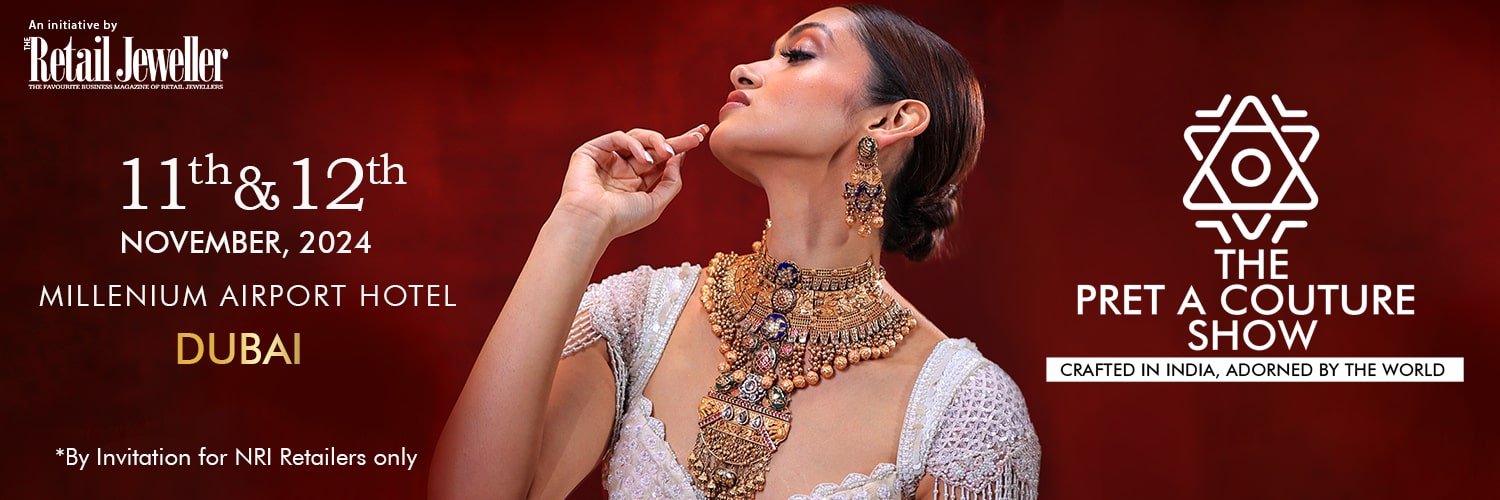Daily News
The Dubai-based Indian retailer that’s now bigger than Tiffany’s
[vc_row][vc_column][vc_column_text]
Malabar Gold’s MD of international operations, Shamlal Ahammed, says the goal is to be the world’s biggest
[/vc_column_text][vc_single_image image=”4111″ img_size=”full” add_caption=”yes”][vc_column_text]Tiffany’s was never the benchmark, but it’s no longer much competition either for Malabar Gold; the latest turnover details released by both companies show Malabar Gold, which manages its international operations out of Dubai, crossed Tiffany and Co, erstwhile the world’s most renowned jeweller, in terms of sales revenue this year.
It has only taken the company 25 years to do it. What began in 1993 as a small shop in Kerala in the south of India, now counts 215 outlets across in nine countries across the world, including nearly all of the GCC and Singapore.
The international gamble
Key to new successes internationally will be tapping into new demographic of customers. Traditionally, the company’s strongest market’s have been India and the South Asian diaspora across the Middle East that has an affinity for 22ct jewellery. India, where it has a higher proportion of outlets, accounts for roughly a third of the company’s revenue and will continue being the company’s main focus area. But by July, the company will begin expanding across both shores of the Atlantic in the US and the UK, as well as open new outlets in other parts of South Asia.
“People in India buy gold jewellery as gifts and to invest,” says Shamlal Ahammed, managing director of international operations –his father, MP Ahammed, along with a group of investors, founded Malabar Gold and remains as chairman. Now the company is experimenting with other store formats that will attract buyers from other parts of the world, “who don’t necessarily purchase gold as an investment product”.
In the UK for instance, where 18ct gold is preferred “as an accessory”, Malabar gold will invest in setting up shop in kiosks “to attract impulse buyers” he says. “It wouldn’t make sense to have larger more expensive stores there.”
The company will follow a similar strategy in the US, but for a different reason. “You see buyers across the spectrum in the US, but they have a number of other players such as Zales and Jared which are already established in the market there. So we’re going to start by building a presence first.”
Meanwhile in the Gulf, where Malabar Gold has 112 stores, the company is going to experiment with a whole other variety of stores: retaining its high street 22ct jewellery for the South Asian market, jewellery stores inside malls for tourists, and stalls and shops in more traditional local markets, with 21ct jewellery for the local demographic as well as other Arabs such as from the Levant.[/vc_column_text][vc_single_image image=”4112″ img_size=”full”][vc_column_text]
“We want to be the world’s number one jeweller,” says Ahammed, “but we are also going to remain a mid- to upper-income jewellery retailer. Any segment higher has its own established brands. In our segment we can drive revenues through minimal margins but higher turnover. Being number one is all about how fast you can turn around your inventory.”
Local advantage
Becoming the world’s biggest jewellery retailer doesn’t look like it would be much of a task for Malabar, given that the company has opened 212 stories in just the last 17 years. But it’s a trickier proposition when you dive into the details.
“Some people might be surprised to know that the number one jewellery retailer in the world is China’s Chow Tai Fook, not a company in the US or anywhere else. And that’s because they focus on just the Chinese market,” says Ahammed. “There isn’t enough of a vacuum for international jewellers in China, other than the designer fashion brands,” he says. “Any other jewellery product is made by the Chinese for the Chinese.”
[/vc_column_text][vc_single_image image=”4113″ img_size=”full”][vc_column_text]
Malabar Gold’s international operations will go a long way in boosting the company’s profile. However it has a major ace up its own sleeve – the world’s second largest country by population.
With over 1.4 billion people, India is a major market Malabar wants to further tap to propel it into pole position among jewellery retailers in the world. “If we focused on just India it would happen. Of course India has mom-and-pop jewellery stores all over the place, so while we are buying some of these stores out, despite a fast pace of growth, we will still look to expand organically,” says Ahammed.
Going public
Malabar Gold also has another plan to fast track its climb. By 2020, it will file an IPO in India and is currently also looking at exchanges in Dubai and London to dual list at. “Our Indian operations will grow aggressively this year and we will definitely go for an IPO in India by 2020. But we will look to dual list and are considering doing that in either Dubai or London,” he says.
As long as there is love and affection in the world, people will give gifts. And gold jewellery is the best thing that you can gift”
Interest for the IPO shouln’t be an issue, according to Ahammed. “We have a different business model. The family owns 40 percent of the company while most of our employees have share options. We partner locally wherever we grow, and right now there is a waiting list of over 1,700 investors.”
Few other businesses would have the optimism that Ahammad shares with us during the interview. But the reason behind that is one he says is all due to a quote his father once shared with him: “There’s a 5,000 year-old tradition behind the metal. And my father has always said, ‘As long as there is love and affection in the world, people will give gifts. And gold jewellery is the best thing you can gift.’ It’s the perfect combination of sentiment, tradition and resale value.”
[/vc_column_text][/vc_column][/vc_row]

 Wide Angle2 months ago
Wide Angle2 months agoIndia has overtaken China to become second largest diamond market: De Beers CEO Al Cook

 Daily News2 months ago
Daily News2 months agoLimelight Lab Grown Diamonds secures $ 11 million in funding to fuel its retail growth

 Daily News2 months ago
Daily News2 months agoIndia is largest consumer of gold jewellery in 2024, surpassing China: WGC report

 Exclusive2 months ago
Exclusive2 months agoWith Rs 100 cr revenue in 9 months of FY25, Gargi by PNGS is in aggressive expansion mode





















